A Comprehensive Comparison: Saltwater and Freshwater Pearls

Among many gems worldwide, pearls stand out as the most unique. Do you know that pearls are made underwater, unlike the other gems created underneath the earth's crust? In fact, living creatures create them.
These precious gems are formed when a foreign material like a parasite, stone, or sand gets into the shell of the oysters or mussels. As a protective mechanism, these water creatures release a protective coating known as nacre, which builds up in layers and then hardens around the irritant. Thus, creating a lustrous pearl; what is more mesmerizing than this?
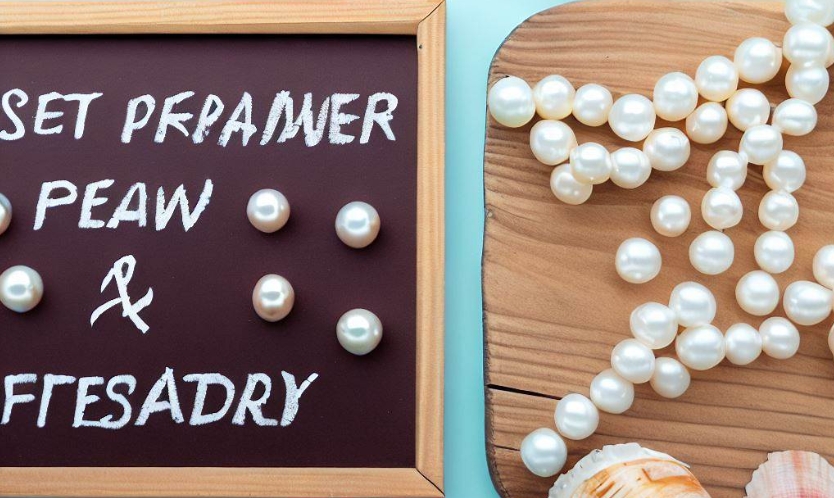
What most people do not know is that there are pearls that come from fresh water and others from salty water. We will discuss the difference between these pearls and their unique attributes.
Main Differences Between Freshwater vs. Saltwater Pearls
The environment where a pearl grows impacts its quality and value. The two types of pearls you will find are freshwater and saltwater. Though both gems are fabulous, it is best to know the difference to decide what suits you best.
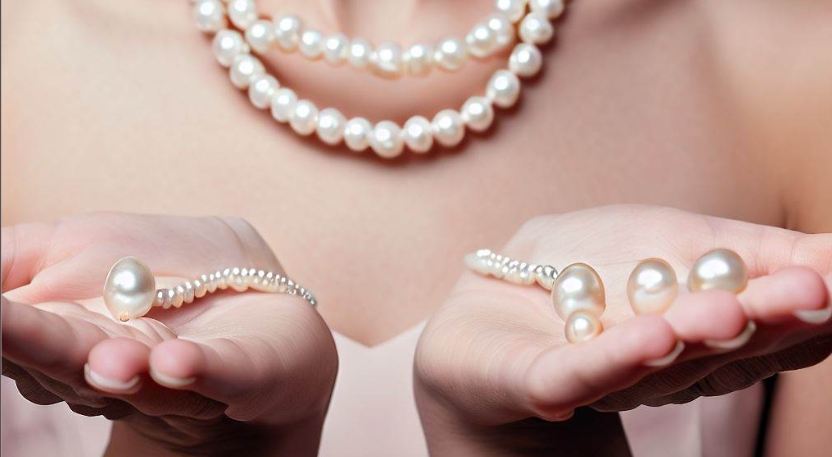
Luster
When buying pearls, you first need to identify the gem's luster. The simplest way to do this is by placing a white background and examining the gem; you should see your reflection on a fine gem.
Note that the higher the luster, the more valuable the gem. Saltwater pearls have a more lustrous shine than freshwater ones. It is because of their variety, cold water, and cultivation methods.
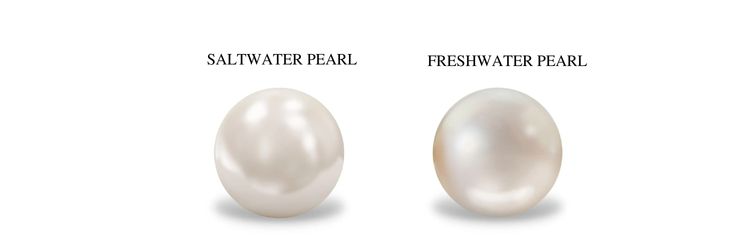
Nacre
The pearls from freshwater have layers of crystalline nacre. The feature makes them soft but pale. That explains why light takes longer to travel through; most of them are dyed to achieve a shiny look.
On the other hand, the pearls formed from saltwater have thin layers of nacre formed around a solid foundation. When the pearls form, they get a brilliant, lustrous shine that looks pretty fine.
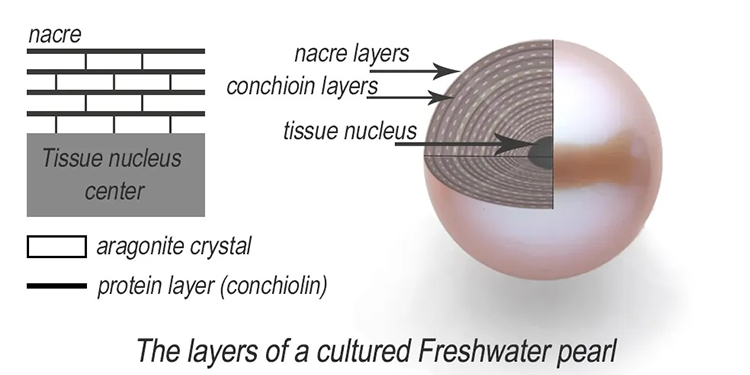
Shape
Though it is possible to find round-shaped freshwater pearls, most come in semi-round, oval, baroque, and coin shapes. These shapes are from both natural and cultured pearls that are tissue nucleated. The irregular shapes give these gems an interesting feature, making them exciting and fun to wear.
In contrast, most of the natural and cultured pearls are round-shaped. The reason is that the pearls made in the saline environment are nucleated. If you prefer the best conventional round pearls, you will likely find them when you get the seawater pearls.

Price
One of the main things buyers want to know when buying salt and freshwater pearls is their value. Note that the price of these two gems varies significantly. That's because freshwater pearls are less costly than saltwater pearls.
For instance, you can get an excellent quality multicolor freshwater pearl bracelet for approximately $100, while a similar saltwater pearl will cost double the price.
The reason that freshwater pearls have low prices is that they are produced in large volumes at a time. One freshwater mussel can have between 6-120 pearls. On the other hand, marine oysters produce one to two pearls at a time.
The other thing that impacts the price is that, unlike the freshwater pearl cultivars, there is a regulation on the number of saltwater pearls a farmer can produce in a year. Thus, this makes saltwater pearls rare and costly in some places.
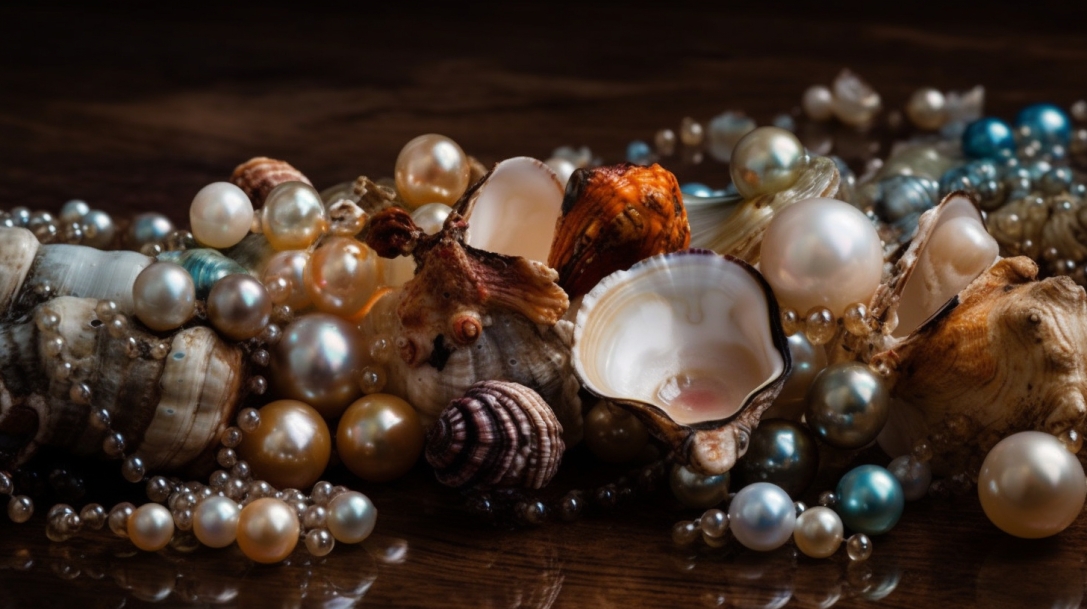
Color
Wearing white pearls has been an ongoing trend for a long time, and it does not seem like it is about to end. Though today, people are more open to the different shades of pearls, white-shaded pearls (fresh and saltwater) are still in demand and more valuable.
Freshwater pearls come in different shades. That's because they mimic the inner nacre of the shell they are grown in. The commonly shaded ones in these gems are purple, white, peach, and pink. The color of the pearls that grow in saline environments depends on the types. For instance:
- The South Sea pearls are silvery or golden
- The Akoya pearls are blue or gray
- The Tahitian pearls can be silver, purple, green, or black.
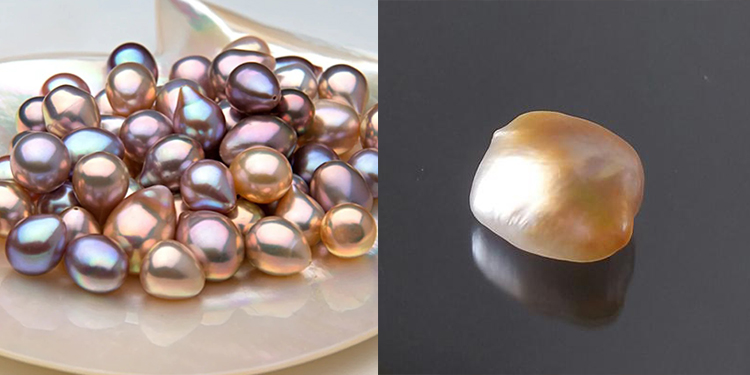
Size
Freshwater pearls are generally smaller than saltwater pearls. You will realize that most popular freshwater pearls have sizes ranging from 3.0 - 8.0mm. Saltwater pearls' most common size range from 8 - 14mm or even up to 16.0mm in some instances.
Freshwater Pearls 101: More to Know
A common saying about pearls is; pearls do not live on the seashore; if you desire it, you must dive for it. Luckily, divers have done the job for you; you only have to buy one from our store.
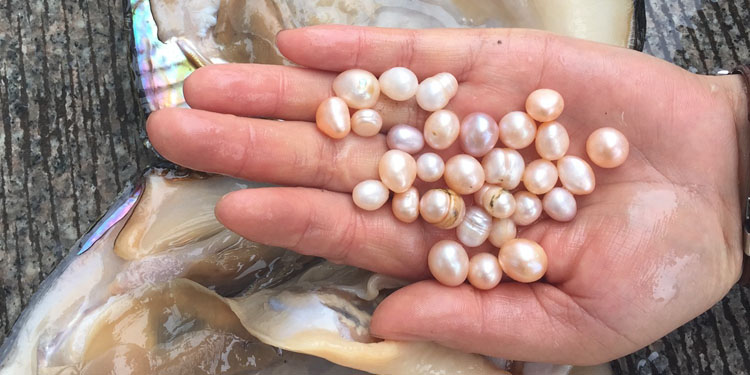
What Are Freshwater Pearls?
You are probably wondering, what are freshwater pearls? There is much more you need to know before buying a freshwater pearl.
Let's dive into the nitty gritty of freshwater pearls!
1) Origin
Freshwater pearls grow in fresh waters like rivers, lakes, and artificial ponds. Most of the freshwater pearls in the market today come from China. However, there is small production from Lake Kasumigaura and Lake Biwa in Japan and the U.S. state of Tennessee.
2) Typical Shapes
A unique trait of freshwater pearls is their shape. The most common include round, oval, teardrop, baroque, coin, and button shapes. Their irregular nature gives them an organic appearance.
3) Color
The main colors of freshwater pearls were gray, cream, and white. But you can also get pastel hues like orange, pink, lavender, canary, and yellow.
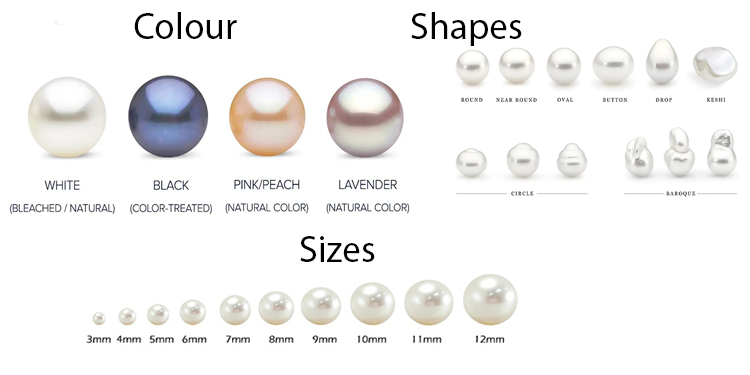
Cultured Freshwater Pearls Vs. Natural Freshwater Pearls
Freshwater pearls have two main categories; cultured and natural pearls. Cultured pearls are created. That is, made using human intervention, where those involved insert a piece of tissue into a mollusk, forming a pearl around the tissue.
Natural freshwater pearls come up without human intervention. They are created in fresh lakes and rivers. They are also made when a mollusk produces a nacre to protect itself from an irritant.
How Much Are Freshwater Pearls Worth?
The freshwater pearls available in the market today are cultured, and their prices vary. From the White Victoria Online Store, you'll spend anywhere from $119 to $2899 on your preferred gem.
It depends on luster, size, length, color, and quality. Other factors that can impact the price are beauty, rarity, and market demand.
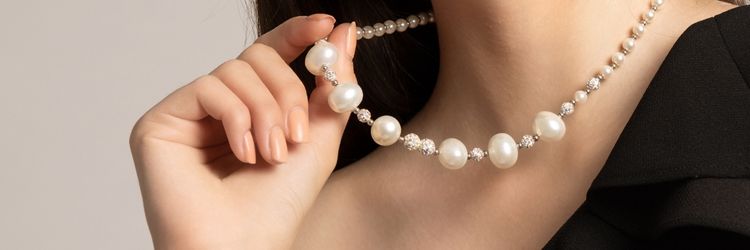
Pros and Cons of Freshwater Pearls
Freshwater pearls are popular since they are versatile and affordable. However, like any other gems, they have their pros and cons.
Pros
- Affordable
- Versatile
- Durable
- Sustainable
Cons
- Need proper and careful care
- Most are not as valuable as gold gems
Saltwater Pearls 101: More to Know
Pearls are associated with fine things like holiness, beauty, richness, and success. Keep it here to learn more about saltwater pearls.
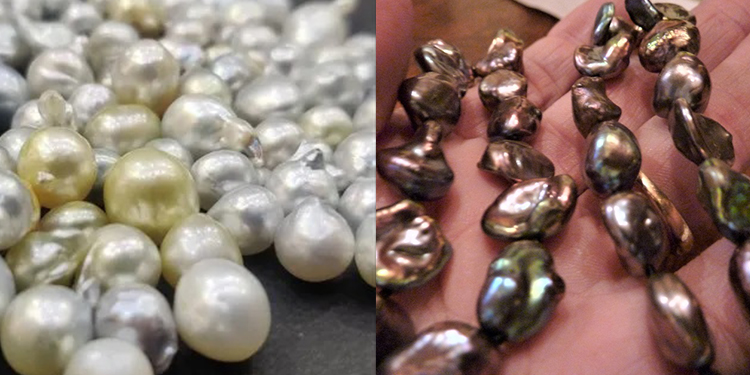
What Are Saltwater Pearls?
You can define freshwater pearls by looking at several distinguishing factors like color, origin, and shape. More details on this are below.
1) Origin
Saltwater pearls are formed by mollusks, specifically oysters, that live in saltwater environments like seas and oceans. Different types of oysters produce them, like the South Sea, Akoya Oysters, and Tahitian oysters.
2) Shape
Seawater pearls come in various shapes. You have the freedom to choose what suits your fashion preference. These shapes include;
- Round – these pearls are spherical with no visible irregularities or flat spots.
- Semi-round – these pearls are flat on one side and have an oblong shape.
- Button – round but flat on both sides.
- Drop – pear-like shape with round bottom and pointed top.
- Circled – they have a ring-like band around them.
- Baroque – they are irregular in shape and have multiple bumps and ridges.
- Keshi – small and irregularly shaped pearls. These pearls form accidentally when the mollusk rejects the nuclear implant.
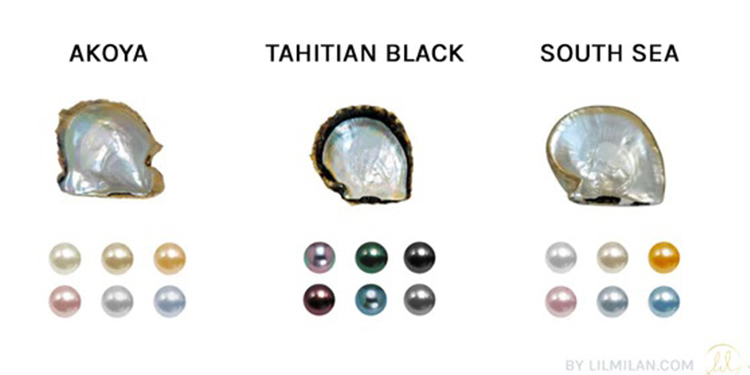
3) Color
The color of saltwater pearls varies depending on factors like the environment in which they grow, the type of oyster, and their condition when harvested. Some prevalent colors are;
- White: these are the most popular pearl colors.
- Peach
- Blue
- Pink or purple overtones
- Golden
- Black or brown
- Green
- Gray
Cultured Saltwater Pearls Vs. Natural Saltwater Pearls
The saltwater pearls are either cultured or natural. The cultured pearls are formed after human intervention, while the natural ones occur without human intervention. Natural saltwater pearls are more valuable when compared to cultured ones.
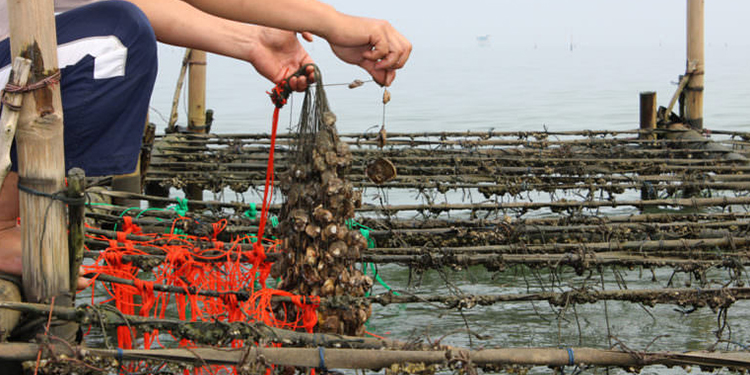
How Much Are Saltwater Pearls Worth?
White Victoria has saltwater pearls ranging from $379 to $2529 and more. The value of the saltwater pearls varies depending on the pearl's size, shape, luster, quality, origin, and color.
The most valuable saltwater pearls are large, round, high gloss, and have a minimal blemish. Note that the market demand can also impact the price.
Pros And Cons of Saltwater Pearls
Before buying these gems, you should know their possible pros and cons. Here we go!

Pros
- Beautiful
- Rare
- Great investment
- Have exception luster
Cons
- Expensive
- Limited supply
- Negative environment impact
Conclusion
Fresh and saltwater pearls have unique traits that make them valuable in their own right. Freshwater pearls are abundant and affordable and come in various colors and shapes. On the other hand, saltwater pearls are known for their beauty, rarity, and high value. They are also rounder and larger compared to freshwater pearls.
However, buying freshwater or saltwater pearls depends on personal preference, budget, and intended use. Again, while these pearls make beautiful and timeless pieces, you should properly care for them. That way, you'll get to enjoy these true treasures for years. Don't hesitate to browse our store to make a purchase today!


Leave a Comment